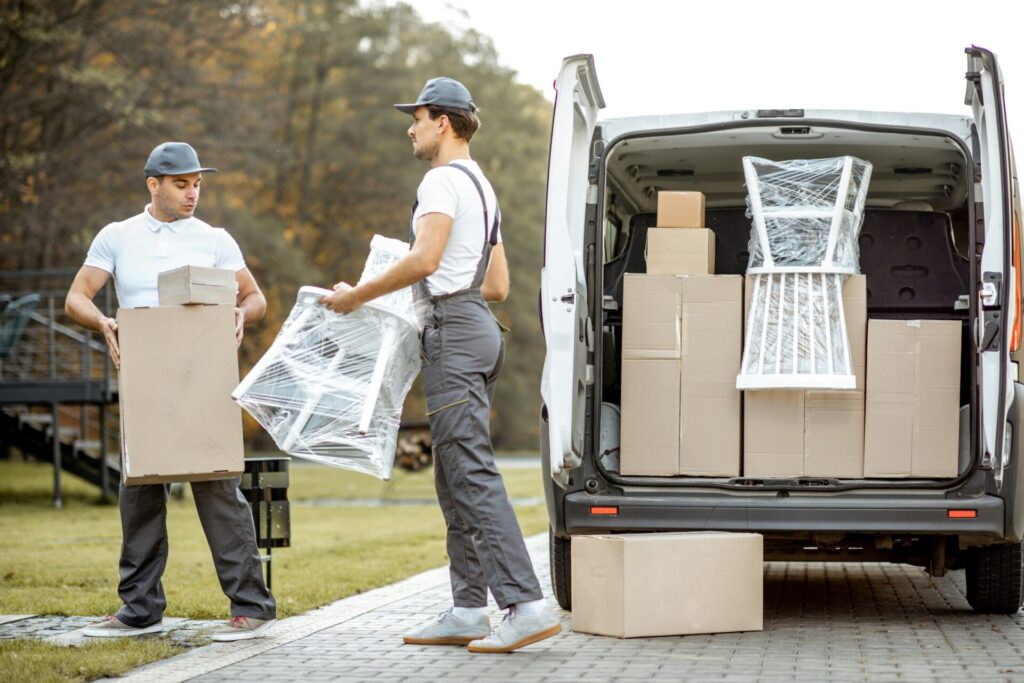Relocating to a new home is one of life’s most exciting milestones. It represents a fresh start, new opportunities, and the chance to design a space that reflects your values. But while moving can be thrilling, it’s often far from sustainable.
From excessive cardboard waste to countless car trips that increase carbon emissions, the traditional moving process tends to have a big environmental footprint.
The good news? With thoughtful planning and mindful choices, you can relocate smoothly while keeping sustainability at the heart of your move.
Here are practical, eco-friendly moving tips to help you stay organised, reduce waste, and embrace a greener transition to your new home.
1. Declutter First: Less to Pack, Less to Move

One of the easiest ways to cut down on waste and moving stress is to declutter. The less you take with you, the lighter your move becomes, both physically and environmentally.
- Donate: Give clothes, shoes, furniture, or homeware to charities and community shelters.
- Sell: Host a garage sale or list items online. From vintage clothing to unique collectibles or specialty items like curated glassware from a smoke shop, your belongings may find a second life with someone else.
- Recycle: Properly recycle electronics, paper, and plastics instead of tossing them in the bin.
Decluttering not only simplifies your move but also ensures fewer boxes, fewer trips, and a smaller carbon footprint.
2. Use Sustainable Packing Materials

Packing materials are often the biggest culprits of waste during relocation. Instead of buying rolls of plastic bubble wrap and single-use supplies, think creatively:
- Boxes: Reuse cardboard boxes from supermarkets, bookstores, or community groups. Better yet, rent reusable plastic bins from moving companies.
- Wrapping: Replace bubble wrap with towels, bedsheets, old newspapers, or biodegradable packing peanuts.
- Tape: Opt for paper-based or compostable packing tape instead of plastic versions.
Eco-friendly packing materials not only reduce waste but also save money by repurposing items you already own.
3. Pack Smart to Minimise Trips

Fuel consumption is a major factor in a move’s carbon footprint. To reduce emissions:
- Pack strategically so every box and bin is full.
- Place heavier items in smaller boxes to avoid injuries and maximise space.
- If renting a van, choose the right size to avoid unnecessary trips.
- Ask moving companies about eco-friendly vehicles or hybrid options.
Even small changes in logistics can make a big difference in reducing fuel use.
4. Embrace Digital Tools Over Paperwork

Moving involves a lot of paperwork like contracts, checklists, address changes, and utility transfers. Going digital is a greener and more efficient alternative.
- Store checklists on your phone instead of printing.
- Update your address online with banks, insurance providers, and postal services.
- Request e-bills from utility providers in your new home.
This not only saves paper but also keeps everything organised in one place.
5. Dispose of Hazardous Materials Responsibly

Many households have items that cannot simply be thrown in the trash, such as paint, batteries, old cleaning products, or electronics. When relocating:
- Check your city’s guidelines for disposing of hazardous waste.
- Drop off e-waste at certified recycling centers.
- Donate unopened paint or supplies to schools, art centers, or community projects.
Proper disposal ensures these materials don’t contaminate landfills or harm ecosystems.
6. Green Your Move Day

The moving day itself can also be made more eco-friendly with some thoughtful touches:
- Carry reusable water bottles and snacks to avoid single-use plastics.
- Carpool with family or friends to reduce extra vehicle trips.
- Switch off lights and appliances in your old home before leaving.
These small acts collectively contribute to a more sustainable relocation.
7. Unpack With Intention

Once you’ve arrived at your new home, resist the urge to buy unnecessary plastic storage bins or fast décor. Instead:
- Repurpose moving boxes for storage or recycle them.
- Organise your home with what you already own.
- Choose eco-friendly décor, second-hand furniture, or sustainable brands when making new purchases.
Unpacking slowly and intentionally helps you set up a home that reflects your values—organised, minimal, and sustainable.
8. Offset Your Moving Footprint

Despite your best efforts, every move has some environmental impact. Consider balancing this by:
- Planting trees through local NGOs or online programs.
- Supporting renewable energy projects.
- Donating to environmental charities.
Carbon offsetting is a great way to ensure your eco-friendly intentions extend beyond moving day.
Moving doesn’t have to mean piles of waste and heavy emissions. By decluttering mindfully, using sustainable packing materials, minimising trips, and offsetting your footprint, you can turn your relocation into a positive and eco-conscious experience.
A smooth, eco-friendly move is more than just a relocation, it’s a chance to align your lifestyle choices with your values. After all, your new home is not just about where you live, but how you live.









